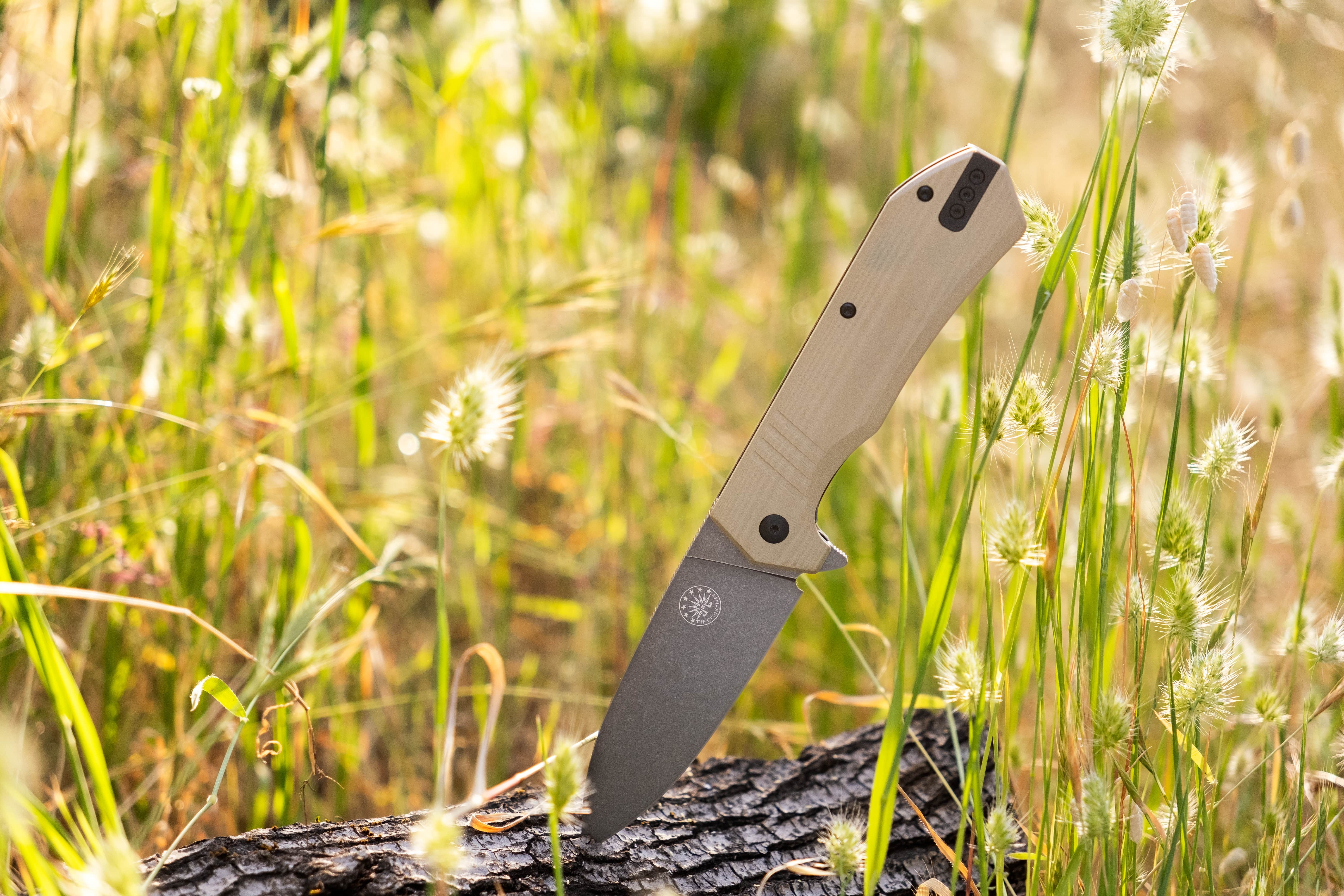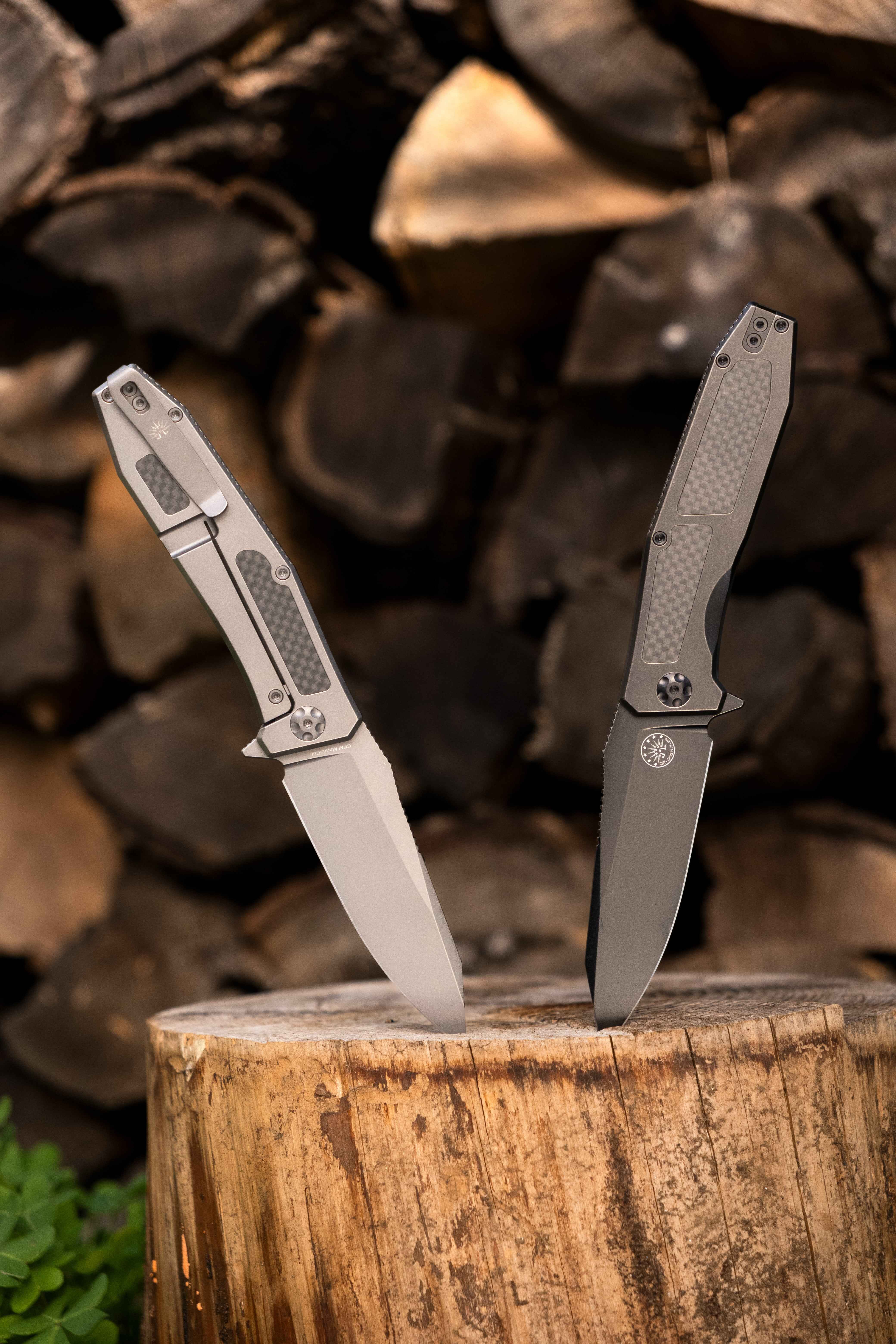What is the difference between a clip point knife and a drop point knife?
Posted by Emran Hossen on Nov 1st 2025
The main difference between a clip point knife and a drop point knife lies in their tip design and functionality. A clip point knife has a concave or straight cut-out on the spine, creating a thinner, sharper tip ideal for precision and piercing. In contrast, a drop point knife features a convex, downward-curved spine that forms a thicker, stronger tip, offering better control and durability for general use and heavy-duty cutting tasks.
Now, let’s explore what makes these two blade styles different, their best uses, and how to choose the right one for your needs.
What Is a Clip Point Knife?
A clip point knife features a blade with a concave or straight cut-out (“clip”) on the spine near the tip. This clipped portion makes the tip thinner and sharper, offering excellent control and precision for detailed cutting or piercing. The iconic Bowie knife is one of the best-known examples of a clip point design.

Key Features of a Clip Point Knife:
- Distinct “clipped” spine: The upper part of the blade appears as though a section has been “clipped off.”
- Sharp, controllable tip: Ideal for fine, detailed work.
- Versatile blade shape: Suitable for slicing, skinning, and stabbing.
- Usually a curved belly: Provides efficient slicing motion for general tasks.
Common Uses:
- Hunting and skinning
- Precision cutting
- Self-defense or tactical applications
- Outdoor and survival tasks
Advantages:
- Excellent tip control for detailed cuts
- Sharp point ideal for piercing materials
- Fast and agile in hand
Disadvantages:
- Thinner tip makes it slightly more fragile
- Not ideal for heavy-duty piercing or prying
What Is a Drop Point Knife?
A drop point knife has a spine that slopes gently downward from the handle to the tip, creating a “dropped” point. This design provides a strong, controllable tip that resists breaking — making it one of the most practical and versatile blade shapes for everyday and outdoor use.
The drop point blade is popular in hunting knives, survival knives, and EDC knives because it combines cutting efficiency with durability.
![]()
Key Features of a Drop Point Knife:
- Convex spine curve: The spine drops smoothly toward the tip.
- Strong, thick tip: More robust and less likely to snap under pressure.
- Large belly: Ideal for slicing and skinning tasks.
- Excellent balance: Offers control and strength for general-purpose use.
Common Uses:
- Hunting and field dressing
- Everyday carry (EDC)
- Camping and outdoor utility
- Tactical and survival applications
Advantages:
- Strong, durable tip for tough tasks
- Great control and balance
- Ideal for slicing and skinning
- Perfect all-around utility blade
Disadvantages:
- Tip is less sharp for piercing
- Slightly less precise for fine detail work
Clip Point vs. Drop Point: Key Differences
Here’s a clear side-by-side comparison of clip point and drop point knives:
- Blade Shape:
- Clip Point: The spine has a concave or straight “clip” near the tip.
- Drop Point: The spine slopes gently downward from the handle to the tip.
- Tip Design:
- Clip Point: Thin, sharp, and precise for detailed work.
- Drop Point: Thick, strong, and durable for tough tasks.
- Cutting Edge (Belly):
- Clip Point: Moderately curved, good for slicing and controlled cuts.
- Drop Point: Broad, pronounced curve ideal for skinning and utility use.
- Piercing Ability:
- Clip Point: Excellent for piercing and stabbing.
- Drop Point: Moderate piercing power, better for controlled cutting.
- Control and Accuracy:
- Clip Point: Offers excellent precision for fine detail work.
- Drop Point: Provides great overall control for versatile cutting.
- Durability:
- Clip Point: Tip is thinner and more prone to breaking under pressure.
- Drop Point: Tip is thicker and more resistant to damage.
- Best Uses:
- Clip Point: Tactical, self-defense, and precision tasks.
- Drop Point: Hunting, survival, camping, and everyday carry (EDC).
- Examples:
- Clip Point: Bowie knives, certain tactical blades.
- Drop Point: Hunting knives, bushcraft knives, and most EDC folders.
In summary:
- Choose a clip point for precision, piercing, and fine detail.
- Choose a drop point for strength, control, and all-around performance.
Choosing Between Clip Point and Drop Point: What’s Right for You?
Selecting the right blade shape depends on how you plan to use your knife. Consider the following factors:
1. Everyday Use
If you need a reliable EDC knife for daily cutting tasks — like opening packages, cutting rope, or food prep — a drop point knife is ideal. Its strong tip and balanced shape make it perfect for general use.
2. Hunting or Field Dressing
For hunters, both designs can work. However:
- Drop point knives excel in field dressing due to their curved belly and strong tip that won’t puncture internal organs.
- Clip point knives are great for detailed skinning and precision work
3. Tactical and Self-Defense
The clip point design shines here. Its sharp, fine tip allows fast, deep penetration — an advantage in tactical or combat situations.
4. Survival or Outdoor Adventures
When you’re camping, hiking, or in survival mode, a drop point is the superior choice. Its sturdy blade can handle batoning, slicing wood, and tough materials without snapping.
Blade Material and Handle Matter Too
While the blade shape is crucial, the overall performance also depends on the steel type and handle design.
1. Blade Steel
- High Carbon Stainless Steel: Offers excellent edge retention and corrosion resistance.
- Tool Steel (like Cryo D2 or MagnaCut): Known for toughness and wear resistance — perfect for survival and tactical use.
2. Handle Design
Look for ergonomic handles made from G10 and Titanium, providing a secure, comfortable grip — essential for precise control during prolonged use.
Maintenance Tips for Both Blade Types
To keep your clip point or drop point knife in top condition:
- Clean after use: Wipe the blade with a dry cloth and avoid prolonged moisture exposure.
- Oil regularly: Use light oil to prevent rust and maintain smooth deployment.
- Sharpen properly: Maintain the correct angle (usually 20–25°) using a quality sharpening stone.
- Store safely: Keep in a sheath or case to protect the blade and prevent accidents.
Why Blade Shape Matters for Performance
The blade shape determines how efficiently a knife performs its intended tasks.
- Clip points deliver precision, agility, and speed.
- Drop points offer control, power, and durability.
Understanding these differences helps you select the best knife for your lifestyle — whether you’re a hunter, outdoor enthusiast, or everyday knife user.
Frequently Asked Questions (FAQs)
1. Which is better, clip point or drop point?
Neither is universally “better.” Clip points are ideal for precise cutting and piercing, while drop points offer superior strength and versatility for general use.
2. Are clip point knives good for hunting?
Yes, clip point knives are great for skinning and detailed cutting. However, for field dressing large game, drop points are usually preferred for their strong, controllable tip.
3. Why do Bowie knives use a clip point design?
The clip point provides a sharp, controllable tip that enhances piercing ability — perfect for both combat and outdoor tasks, which is why the Bowie knife uses it.
4. Can I use a drop point knife for EDC?
Absolutely. Drop point knives are among the most popular EDC options because of their strength, ease of use, and versatility.
5. Which knife tip is stronger?
The drop point tip is stronger and less likely to break because of its thicker spine and convex design.


